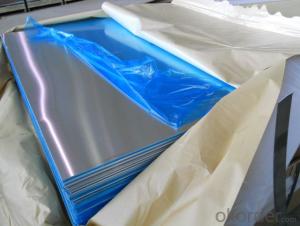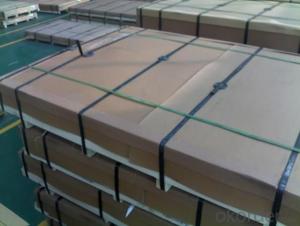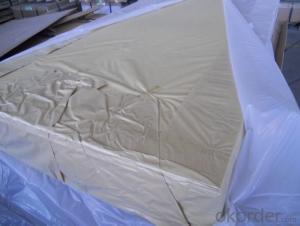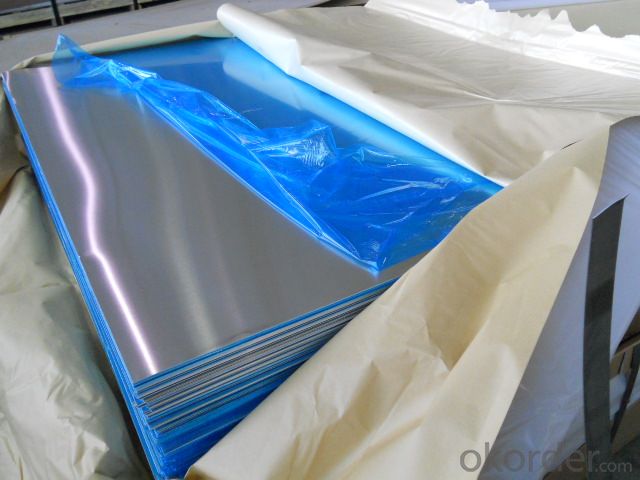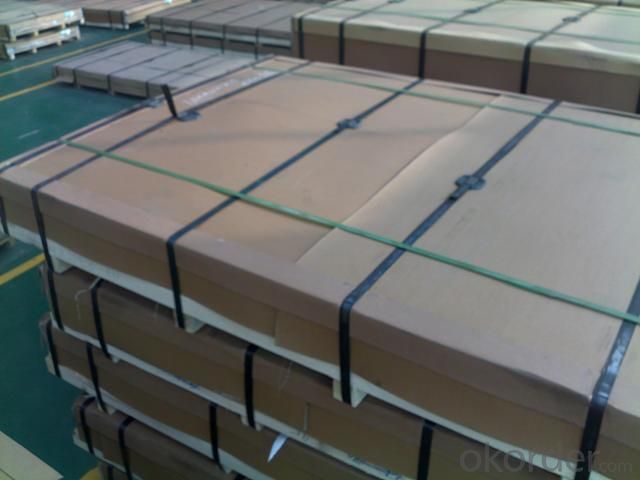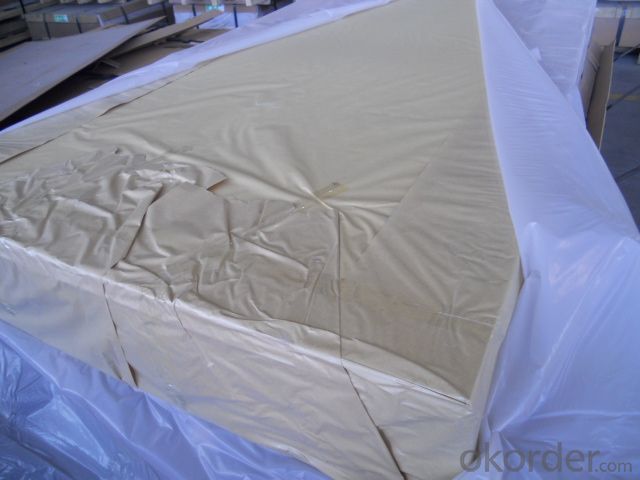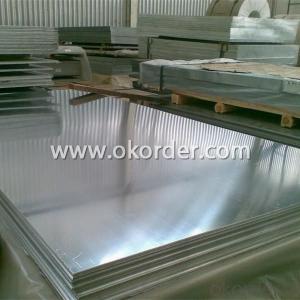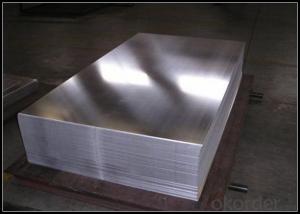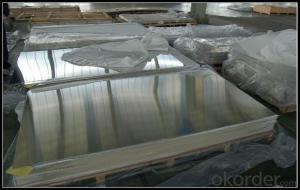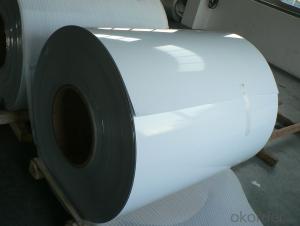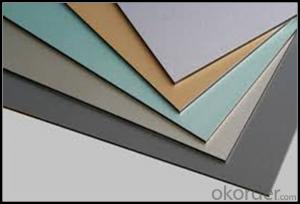Aluminum Print Sheets for Point-Fixing Curtain Walls
- Loading Port:
- Shanghai
- Payment Terms:
- TT or LC
- Min Order Qty:
- 5 m.t.
- Supply Capability:
- 100000 m.t./month
OKorder Service Pledge
OKorder Financial Service
You Might Also Like
1.Structure of Aluminium Sheets for Point-fixing Curtain Walls Aluminium sheets for point-fixing curtain walls are one type of non-frame curtain wall than consist of glass panels, point-fixing components on such panels and their supporting structures. . Aluminium sheets for point-fixing curtain walls are good at ductility, heat conductivity, anti-corrosion and moisture resistance. They are widely used in roofing, electronics, instruments, lighting decoration, packing, decoration, curtain wall, sandwich panels, boats, etc. 2.Main Features of Aluminium Sheets for Point-fixing Curtain Walls •High intensity •Easy to be processed and shaped •Weather resistance •Anti-pollution & environment protection 3. Aluminium Sheets for Point-fixing Curtain Walls Images 4.Specification of Aluminium Sheets for Point-fixing Curtain Walls Alloy AA1050,AA1060, AA1070, AA1100 Temper: H12, H14, H16, H18, H22, H24, H26, H32,HO, F Thickness: 0.10-500mm Width: 10mm- 2200mm Standard: GB/T3880-2006, ASTM, ISO, EU standard Special Specification is available on customer’s requirement 5.FAQ A.What about inspections to guarantee quality? For each order for Aluminum Sheets, we will arrange strict inspection for raw materials, inspection during production and inspection for finished goods. With requirement of customers, we also can arrange the third party inspection. B.What about delivery? We will put order for Aluminum Sheets in production schedule after order gets confirmed against copy of TT or L/C. Normally it takes about one month for production. Exact shipment schedule is different based on different sizes and quantity. C.What is the MOQ? 5 tons for each size. D. What about your main markets for aluminium sheets? Main markets include South East Asia, Middle East, North America, Southc. 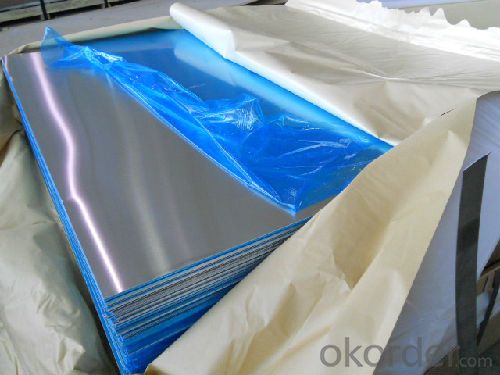
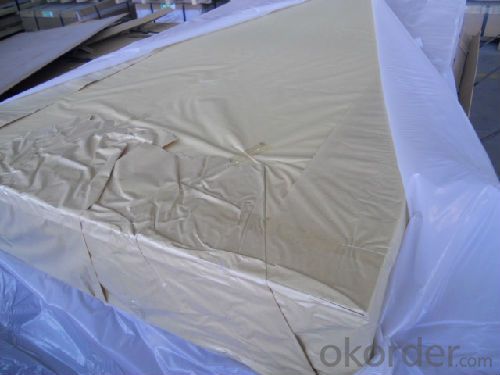

- Q: Are aluminum sheets suitable for pharmaceutical packaging?
- Yes, aluminum sheets are suitable for pharmaceutical packaging. Aluminum is widely used in the pharmaceutical industry due to its unique properties. It is a lightweight material that provides excellent protection against moisture, oxygen, and light. This makes it ideal for packaging sensitive pharmaceutical products that require a high level of protection and stability. Aluminum sheets are also highly resistant to corrosion and have good heat conductivity, allowing for efficient heat sealing during the packaging process. Furthermore, aluminum is non-toxic and non-reactive, ensuring the safety and integrity of the pharmaceutical products. Overall, aluminum sheets are a reliable and commonly used material for pharmaceutical packaging.
- Q: Explain the impact of aluminum sheets on the thermal insulation of a building.
- <p>Aluminum sheets, due to their high thermal conductivity, can significantly reduce the thermal insulation of a building. They allow heat to transfer easily through them, which can lead to increased heat loss in winter and heat gain in summer. This can result in higher energy consumption for heating and cooling, making the building less energy-efficient. However, when used in combination with proper insulation materials and techniques, aluminum sheets can still be part of an effective building envelope, provided their thermal bridging effects are mitigated.</p>
- Q: What are the different surface patterns available for aluminum sheets?
- Depending on the desired aesthetic and functional requirements, aluminum sheets can exhibit a range of surface patterns. Some commonly used patterns include: 1. Smooth Finish: This basic pattern offers a flat and polished appearance, ideal for applications that prioritize a clean and sleek look, such as architecture and interior design. 2. Stucco Embossed: Featuring a raised texture resembling stucco, this pattern enhances durability and slip resistance. It is suitable for surfaces like stair treads or ramps that require a non-slip surface. 3. Diamond Tread: This pattern consists of raised diamonds on the surface, providing superior traction and slip resistance. It is commonly used in applications where safety is a concern, such as vehicle running boards or industrial flooring. 4. Hammered Finish: Creating a textured appearance similar to hammered metal, this pattern adds visual interest and can be used to enhance the aesthetics of architectural elements, decorative panels, or furniture. 5. Brushed Finish: Also known as satin finish, this pattern is achieved by brushing the aluminum sheet in a linear direction. It creates a smooth and consistent texture, often used for decorative purposes in applications like signage, wall cladding, or kitchen appliances. 6. Perforated: In this pattern, the aluminum sheet is punctured with small holes or slots in a specific design or pattern. It allows for airflow, light transmission, and sound absorption, making it suitable for applications like ventilation systems, acoustic panels, or decorative screens. These examples illustrate the variety of surface patterns available for aluminum sheets. The choice of pattern depends on the intended use, desired appearance, and functional requirements of the application.
- Q: What are the specific rules or codes that govern the use of aluminum sheets in residential construction?
- <p>Yes, there are special regulations related to using aluminum sheets in residential buildings. These regulations can vary by country, state, or municipality, but generally, they cover aspects such as material standards, fire resistance, structural integrity, and energy efficiency. For example, aluminum sheets must meet specific thickness and strength requirements to ensure structural safety. They must also comply with fire codes, which may require certain fire-resistant coatings or treatments. Additionally, energy codes may dictate the insulation value of aluminum sheets used in walls or roofs to improve thermal performance. It's crucial to consult local building codes and regulations to ensure compliance when using aluminum sheets in residential construction.</p>
- Q: i heard that aluminum causes Alzheimers and i was wondering if there is any aluminum in tin.
- Tin is an element, so there isn't anything else in tin. However, tin, the element, isn't really used for much as *just* tin. Tin foil is really a mixture of tin and aluminimum, tin cans aren't pure tin. As elements go, tin is pretty rare. As for the Alzheimers, they don't really know what the correlation is; but they have found large accumulations of metals, not only aluminum, but it doesn't show that causes it. The expression ad hoc, ergo, procter hoc means, before, therefore it caused it. What I mean here is that just because they have found accumulations of aluminum in the brains of Alzheimer's, it doesn't mean it caused it any more than the fact that I did laundry this morning, caused me to spill my coffee on my husband. (both true). Just becasue they happened in that order doesn't mean A caused B. It could mean that whatever causes alzheimers could also mean that the brains of people suspectible to it have a greater ability to accumulate metals crossing the blood-brain barrier. We just don't know enough. I get porcelian caps on my teeth because they thought silver amalgam fillings was causing dementia. Hope I helped~
- Q: whst should I notice while welding aluminum sheet and aluminum block?
- two types of aluminum reach melting points, aluminum block must be preheated when you weld them with small current, you will know how to do it. You can use argon-arc welding back and forth, preheat it with small current.
- Q: What are the different methods of punching aluminum sheets?
- Various techniques are employed to punch aluminum sheets, each possessing unique advantages and limitations. Presented below are some of the most commonly used methods: 1. Manual Punching: The most fundamental approach involves the use of handheld punch tools to manually create holes or shapes in aluminum sheets. It is suitable for small-scale projects and uncomplicated designs, yet it may be time-consuming and less accurate when compared to alternative methods. 2. Mechanical Punching: Mechanical punching machines utilize a mechanical press equipped with a punch and die set to puncture holes or form shapes in aluminum sheets. Such machines offer higher production rates, improved accuracy, and repeatability. This method is well-suited for medium to large-scale projects. 3. CNC Punching: Computer Numerical Control (CNC) punching machines employ computer programming to control the motion of the punch and die set. This technique enables the creation of intricate shapes, patterns, and multiple holes in a single operation. CNC punching provides exceptional precision, efficiency, and versatility, making it highly sought after in industrial settings. 4. Laser Punching: Laser punching merges laser cutting and punching technologies. A high-powered laser beam heats and softens the aluminum sheet, followed by a mechanical punch that forms the desired hole or shape. Laser punching delivers superior precision, speed, and the capability to work with various materials and thicknesses. It is commonly employed in the automotive and aerospace industries. 5. Waterjet Punching: Waterjet punching involves using a high-pressure stream of water mixed with abrasive substances to cut through aluminum sheets. This method is ideal for cutting intricate shapes and thick materials. It boasts exceptional precision, minimal material distortion, and the ability to work with a diverse range of materials. The choice of punching method depends on factors such as design complexity, required precision, production volume, and budgetary considerations. It is crucial to consider these factors and seek guidance from professionals to determine the most appropriate punching method for a specific application involving aluminum sheets.
- Q: This question asks for a comparison of the benefits and drawbacks of using aluminum sheets as a roofing material.
- <p>Aluminum sheets for roofing offer several advantages, including durability, resistance to rust and corrosion, lightweight nature, and energy efficiency due to reflective properties. They are also easy to install and maintain, and can be recycled, making them environmentally friendly. However, there are some disadvantages such as being more expensive than some other roofing materials, potential for denting if not properly installed, and noise issues during heavy rain or hail due to their lightweight nature. Additionally, they may require more frequent replacement compared to some other materials.</p>
- Q: What is the final concentration of aluminum cation?
- You have to be able to determine the number of moles of Al+3 that each solution contributes to the final solution: 1. aluminum chloride: AlCl3 Multiply the volume (in L) by the molarity to determine the number of moles of each compound dissolved in solution. 0.0431 L x 0.279 M = 0.0120 mol AlCl3 in solution When the AlCl3 in placed in the water, it dissociates to form the following ions: AlCl3 -- Al+3 + 3Cl- So for every one mole of AlCl3 placed in the water, one mole of aluminum ions will dissociate. Therefore, since we have 0.0120 mole of AlCl3 in the solution, that means that the aluminum chloride will contribute 0.0120 Al+3 ions to the final solution. 2. Aluminum sulfate: Al2(SO4)3 Multiply the volume (in L) by the molarity to determine the number of moles of each compound dissolved in solution. 0.0146 L x 0.464 M = 0.00677 mol Al2(SO4)3 in solution When the Al2(SO4)3 in placed in the water, it dissociates to form the following ions: Al2(SO4)3 -- 2Al+3 + 3(SO4)-2 So for every one mole of Al2(SO4)3 placed in the water, two mole of aluminum ions will dissociate. Use the mole ratios of the dissociation reaction to determine the number of moles of Al+3 ions that the aluminum sulfate contributes to the solution. 0.00677 mol Al2(SO4)3 x (2 mol Al+3 ions / 1 mol Al2(SO4)3) = 0.01354 mol Al+3 ions Therefore, the total number of Al+3 ions in solution is the sum: 0.01354 + 0.0120 = 0.02554 mol Al+3 ions The last piece of information needed to determine the concentration of the final solution is the volume of the final solution. Since the two volumes were mixed, the volume of the final solution will be the sum of the two solutions. 0.0431 L + 0.0146 L = 0.0577 L Therefore, to calculate molarity: Molarity = moles of solute / liters of solution Molarity = 0.02554 mol / 0.0577 L = 0.443 M Al+3
- Q: Are there any formulators out there that have any ideas on putting together a cleaner that removes carbon (baked on grease) from an aluminum pan without attacking the meatal itself?? Ive been thinking about this problem for a while and would appriciate any ideas you guys might have. Thanks
- This is the major topic of research for many commercial companies which prepare Oven and Grill cleaning products. The carbon itself is bound to the metal with denatured (carbonized) fat or oil molecules. These are generally effected only by very strong bases such as Sodium hydroxide (lye) which will react with aluminum and cause discoloration and chemical pitting. Mechanical removal using sharp blades or soft metal bristle brushes will work, but requires much labor. Steel wool is also used, but removes some of the metal from the surface of the pans. Special electrical devices have been used with success, but tend to slowly wear away the top layer of aluminum. Professional cooks ignore the problem by replacing aluminum with stainless steel pans. Home and do-it your-selfers tend to allow the buildup until everything sticks and then replace the pans. There has been a few who have seasoned their aluminum pans in a fashion similar to cast iron with mixed results. If this is for pizza pans for your restaurant, I suggest soaking the pans overnight in a strong solution of Dawn Dish-washing Liquid and then taking the pans to a steam car wash to remove the detergent.
Send your message to us
Aluminum Print Sheets for Point-Fixing Curtain Walls
- Loading Port:
- Shanghai
- Payment Terms:
- TT or LC
- Min Order Qty:
- 5 m.t.
- Supply Capability:
- 100000 m.t./month
OKorder Service Pledge
OKorder Financial Service
Similar products
Hot products
Hot Searches
Related keywords
